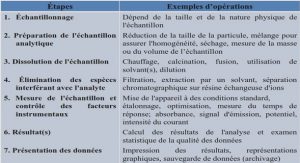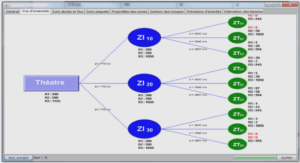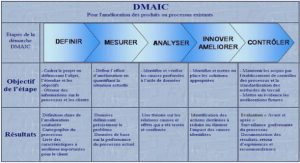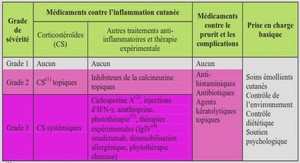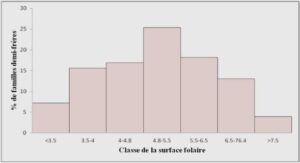English is the mostly used medium for international business communication. Business men around the world use English at work. They use English in finance, industry and exchanging goods and services. As regards Evan Frando (2005:1), “Business English is communication with other people within specific context”. Business English is considered as a branch under English for Specific Purposes (ESP). It is a combination of using English in specific business context (telephoning, participating in meetings…etc) and a more general business context (general business situations). The main objective of Business English is the effective performance. For business people, the priority is to understand and to be understood. An effective performance needs to be seen in the specific business contexts which entail in their turn business skills: reading, writing, listening, interacting and speaking. Therefore the focus on skills training is a basic principle of the performance objective. “Business English teaching…places much more emphasis on the need to develop the skills for using the language learned” Mark Ellis and Christian Johnson (1994:4).
Business English is widely used across the national territory in Algeria as the multinational companies are expending more and more due to the disclosure that Algeria is witnessing primarily in the Business domain. However, Business English has not been given the full attention required in the educational system. Only few contexts adapt the teaching of Business English such as some attempts in the educational system and private schools, again, the content and the method used must be explored for a better perspective of the situation. To have a deeper view on Business English and its teaching, particularly in Algeria, this chapter concerned with literature review is divided in two sections. The first section is about the definition, the development, the place, and the teaching approaches of English for Business Purposes while the second section, deals with the place of English for Business Purposes in Algeria .
Business English: a definition
It is not that easy to define Business English, however; it can be generalized to the language used to communicate in Business context, within (intra) and (inter) companies. It varies from one business domain to another; for instance; the English used for management staff is not the same as the English used in the plant. As Ellis and Johnson (1994: 3) note: Business English must be seen in the overall context of English for Specific Purposes (ESP), as it shares the important elements of needs analysis, syllabus design, course design, and materials selection and development which are common to all fields of work in ESP.As with other varieties of ESP, Business English implies the definition of a specific language corpus and emphasis on particular kinds of communication in a specific context.
Scholars in the field explain that Business English have its own characteristics. Ellis and Johnson (1994: 9) further note that business English is characterized by three aspects .The “sense of purpose”, the “social aspect” and the “clear communication”. They see that the sense of purpose to be “the most important characteristic of exchange in the context of meetings, telephone calls and discussions. Language is used to achieve an end, and its successful use is seen in terms of successful outcomes to the business transaction or event.” In business, there is always a sense of competition either between different companies or employees from the same company. This means that the performance objectives come before educational or learning objectives. Business English entails the factor of risk, i.e. any mistake in the performance of language could cost the business company or the businessman very much. When it comes to the “social aspect”, operating in multicultural environment requires that interlocutors must adapt themselves according to multi-cultural settings they are confronted to among which the language of greetings and introductions. The third aspect which is “clear communication” is crucial to avoid any kind of misunderstanding. According to Ellis and Johnson (ibid), “Information has to be conveyed with minimum risk of misunderstanding, and the time for processing (both by the speaker and by the listener) needs to be short. Therefore there is a preference for clear, logical, thought emphasized by the kinds of words that indicate the logical process” .
Sylvie Donna (2000: 2) as well, considers Business English to concern adults working in any field of business or preparing to work in the field of business. Though it has much in common with EFL , it is still different in many ways since it is always related to students’ work to develop language business skills such as giving a presentation and in some cases it may even mean something much more technical.
The Development of English for Business Purposes
Researchers agree on the fact that Business English has developed as a result of the growth of further specific demands in terms of clearly restricted field services. As regards Réka Lugossy at al (2008: 84) “Business English is part of English for Specific Purposes as a distinct field from General English”, while Pickett (1986:16 qtd in Tony Dudley-Evans and Maggie St John, 1998: 55) defines it as “the language a lot nearer the everyday language spoken by the general public than many other segments of ESP” the diagrammatic representation he offers displays the intra and inter cases of communication.
The Place of English for Business Purposes
ESP is traditionally divided into English for Occupational Purposes (EOP) and English for Academic Purposes (EAP). The following modified diagram from the original one presented by Dudley-Evans and St John (op cit: 6) shows the placement of EBP in ESP as well as its own classification.
EBP is considered as part of English for occupational Purposes (EOP) under the umbrella of English for Professional Purposes (EPP) respectively, despite the fact that EBP is a large area and can also be subdivided. Similarly, EBP is used as an umbrella term to embrace both English for General Business purposes and English for Specific Business purposes targeting either a well selected group or determining a specific business situation such as meetings, negotiating, telephoning which fall under English for ESP. As regards Brian Paltridge & Sue Starfield (2012: 195) the view of Business English narrowed as a result of the enlargement of business communication and thus business English is identified “as the teaching of the language for vocational purposes through linking linguistic performance with actual business activities. » For James Simpson (2011: 26), English for business Purposes (EBP), also known as Business English, became an independent area of study in the early 1990s, primarily as a consequence of the globalization of trade and commerce, which made it necessary for business people to move out their home grounds and operate across territorial, linguistic, cultural as well as socio-political boundaries.
English for General Business Purposes
English for General Business Purposes, henceforth (EGBP) courses are designed for learners who are seeking a basic language background for a future business job or those who are at the beginning of their business career. The learners attend the courses in groups on the account of their language level rather than the business domain they work in. EGBP courses are similar to the English for General purpose (EGP) but with the appropriate lexis and grammar to the business communication as well as the material set in a business context. A good range of materials set for EGBP is available for both teachers and learners and contain a variety of tasks and input set under the form of texts, audio and video. The courses are spilt into units of different areas in business and each single unit tackles the four skills in English with some specific development in grammar and lexis. Generally, EGBP courses focus on accuracy, grammar, lexis, tenses. Fluency comes at the end with few exercises. The setting includes courses such as “meetings”, “travel arrangement”, and “presenting” oneself within a company. Such courses teach a general range of English in business context rather than Business English for Specific purposes.
General Introduction |
